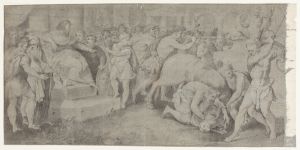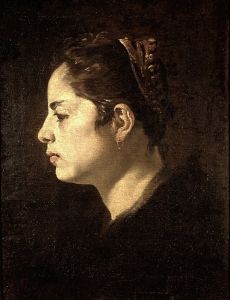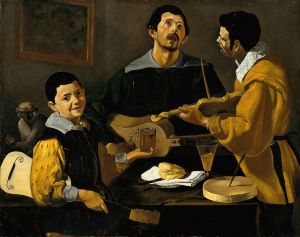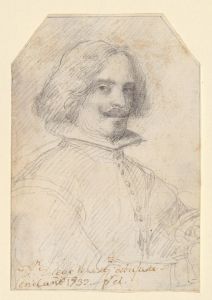
Don Gaspar de Guzmán , Count-Duke of Olivares
A hand-painted replica of Diego Velázquez’s masterpiece Don Gaspar de Guzmán , Count-Duke of Olivares, meticulously crafted by professional artists to capture the true essence of the original. Each piece is created with museum-quality canvas and rare mineral pigments, carefully painted by experienced artists with delicate brushstrokes and rich, layered colors to perfectly recreate the texture of the original artwork. Unlike machine-printed reproductions, this hand-painted version brings the painting to life, infused with the artist’s emotions and skill in every stroke. Whether for personal collection or home decoration, it instantly elevates the artistic atmosphere of any space.
"Don Gaspar de Guzmán, Count-Duke of Olivares" is a portrait painted by the renowned Spanish artist Diego Velázquez. Velázquez, a leading figure of the Spanish Golden Age, is celebrated for his masterful technique and his ability to capture the essence of his subjects with remarkable realism. This particular painting is a testament to his skill and his role as a court painter.
The subject of the portrait, Gaspar de Guzmán, Count-Duke of Olivares, was a significant political figure in 17th-century Spain. Born on January 6, 1587, Olivares was a Spanish nobleman and statesman who served as the chief minister to King Philip IV of Spain. His influence was profound during his tenure, as he effectively governed Spain from 1621 to 1643. Olivares was known for his ambitious reform policies and efforts to centralize the Spanish monarchy, although his tenure was also marked by military conflicts and economic challenges.
Velázquez painted this portrait during his time as a court painter, a position he held from 1623 until his death in 1660. The exact date of the painting is not definitively known, but it is generally believed to have been created in the 1620s or 1630s, during the height of Olivares's power. Velázquez's relationship with Olivares was significant, as the Count-Duke was a patron of the arts and played a crucial role in Velázquez's career at the Spanish court.
In the portrait, Velázquez employs his characteristic style, marked by a realistic depiction of textures and a subtle use of light and shadow. Olivares is portrayed with a dignified and authoritative presence, reflecting his status and power. The painting captures the intricate details of his attire, which is typical of the Spanish nobility of the time, and his expression conveys a sense of determination and intelligence.
The portrait of Olivares is notable not only for its artistic quality but also for its historical significance. It provides insight into the political climate of Spain during the early 17th century and the individuals who shaped its course. Velázquez's ability to convey the personality and status of his subjects makes this painting an important work in the study of both art history and Spanish history.
Today, "Don Gaspar de Guzmán, Count-Duke of Olivares" is housed in the Museo del Prado in Madrid, Spain. The museum holds one of the most comprehensive collections of Velázquez's works, and this portrait is a highlight of their collection. It continues to be studied and admired by art historians and visitors alike, serving as a testament to Velázquez's enduring legacy as one of the greatest painters in Western art history.

















